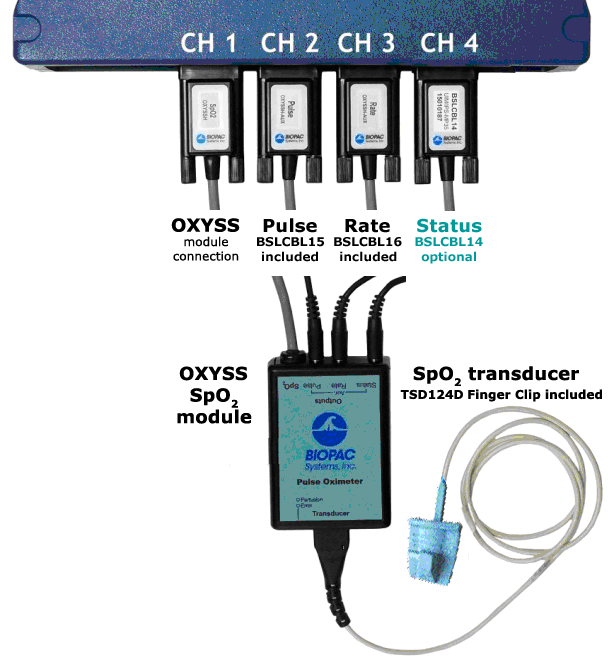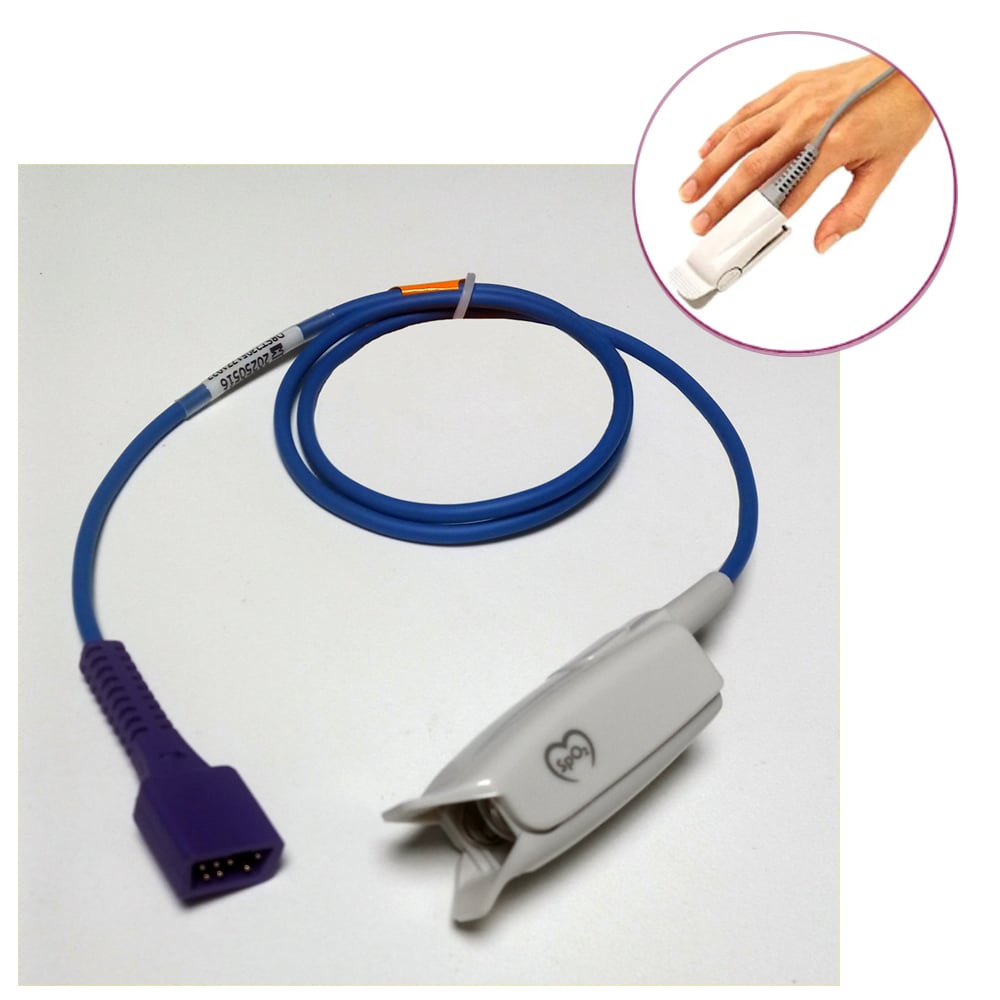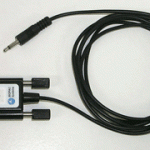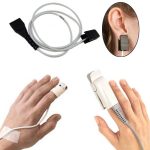The SpO2 finger clip transducer is an absorption design that places two light-emitting diodes (LEDs) on the bottom side of the finger and a photodetector on the top side. The LEDs output two different wavelengths; one red (660 nm peak), and one infrared LED (910 nm peak). The photodiode on the top side faces the LEDs and detects the light that is passed through the translucent part of the finger. The LEDs are alternately flashed many times per second allowing the photodiode to respond to the red and infrared light separately. Well-oxygenated blood is bright red, while poorly oxygenated blood is darker in color. The pulse oximeter determines functional oxygen saturation of arterial hemoglobin from this color difference by calculating the ratio of absorbed red and infrared light as the blood volume at the sensor site fluctuates with each heart beat. Since steady conditions (steady venous blood flow, skin thickness, bone, fingernails, etc.) are not pulsatile, they do not affect the saturation reading.
The Oximeter module input accepts currently offered Human Spo2 Transducers; Finger Clip (TSD124D) is included, Ear Clip (TSD124B) and Flex Wrap (TSD124C) will also work. SpO2 output connects to analog CH input via a 1.8 M (6′) cable.
The OXYSSH-SYS utilizes Nonin Medical Inc. pulse oximeter technology which provides accurate and reliable data.
* Note: If using an MP45 two-channel device, only one auxiliary output can be simultaneously recorded in conjunction with the SpO2 output.
Product Family
Product Type
Platform Options
Powerful Software for Measurement & Reporting
AcqKnowledge for Research Systems and Biopac Student Lab software provide powerful measurement automation, scoring, and reporting tools
Easy Setup, Comfortable for Subjects
Clip-on and flex wrap oximetry transducers provide quick, comfortable setup and great data
Designed for Discovery
Applicable to over 40 academic research fields, plus neuromarketing & commercial applications.





Stay Connected